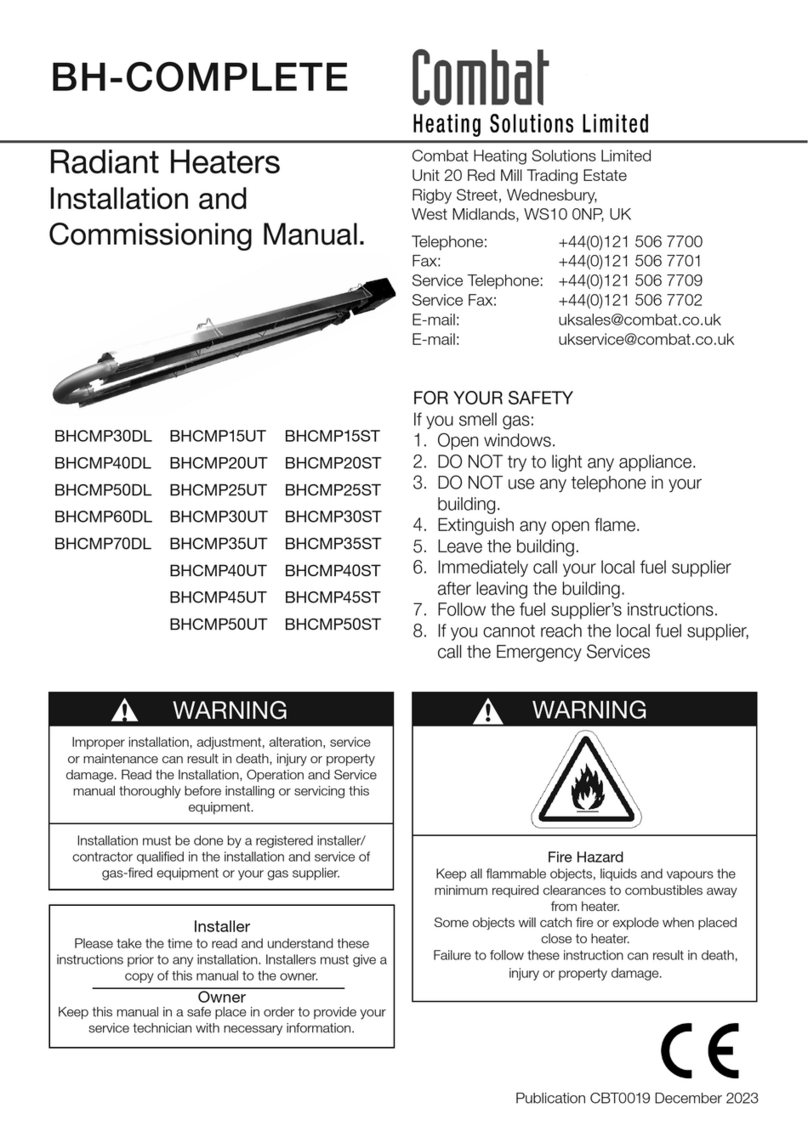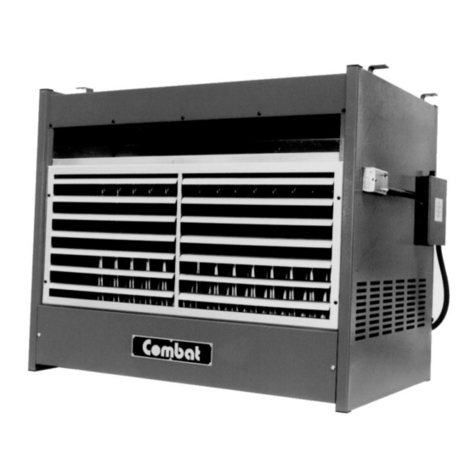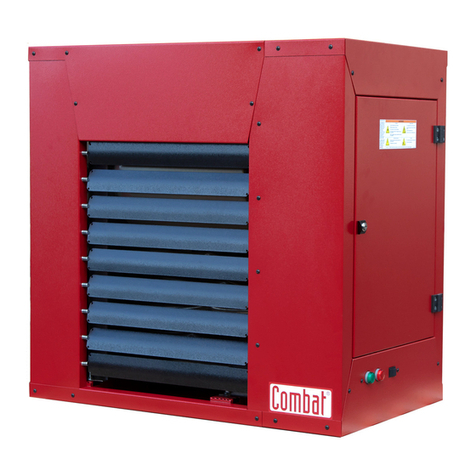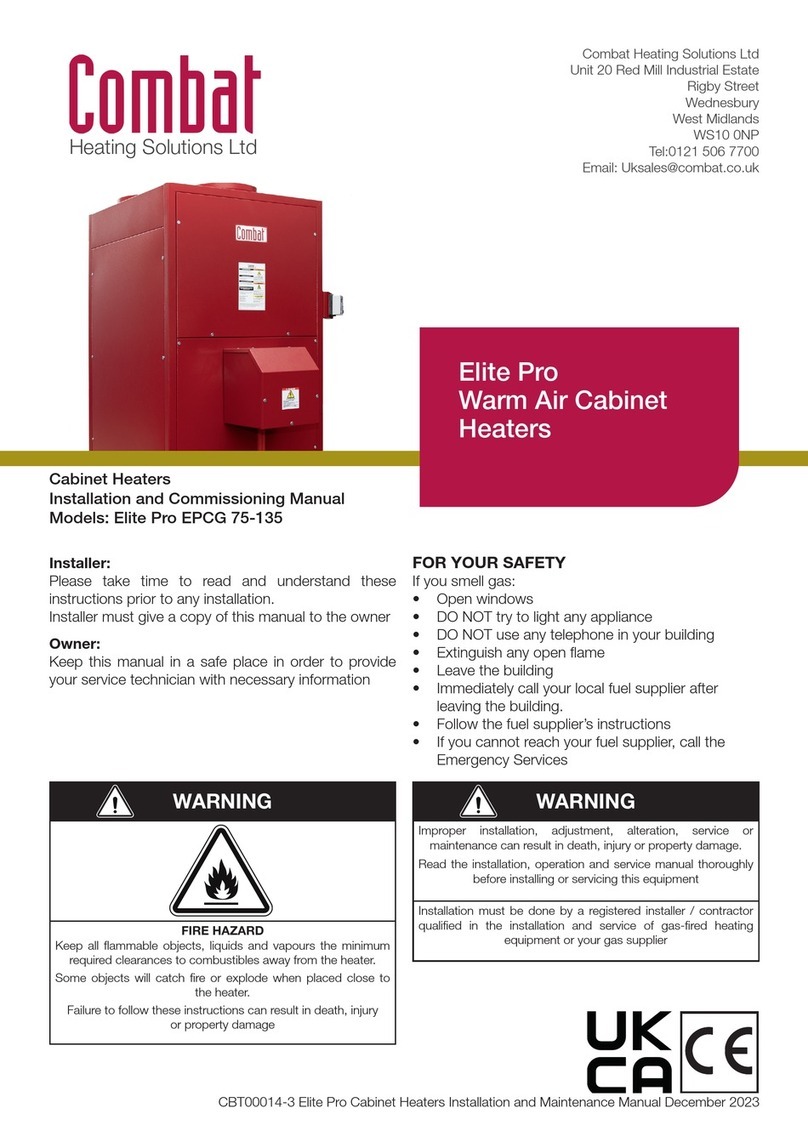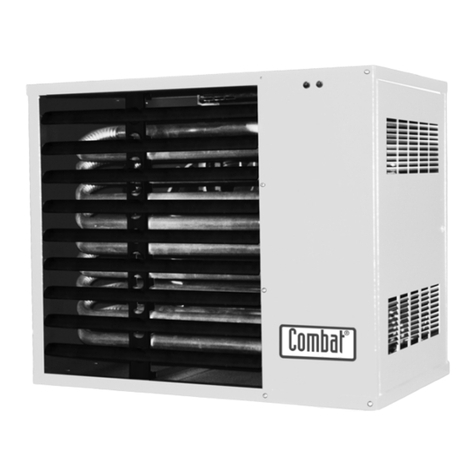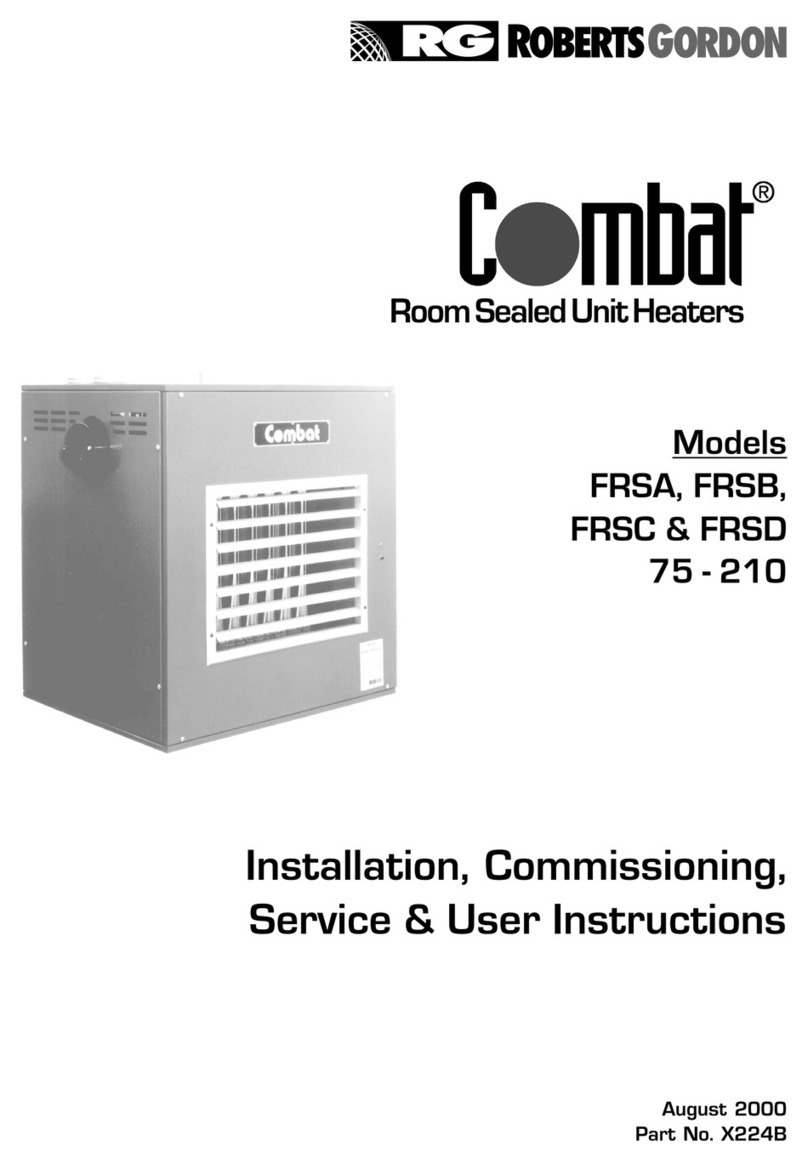
8Combat Elite Installation Operation and Service Manual
® TM
To install the heater, as well as the fuel and electrical
supplies, in accordance with applicable specifications
and regulations Combat Heating Solutions Limited
recommends the installer contact a local building
inspector, fire officer or insurance company for
guidance.
• To use the information given in this manual together
with the local national regulations to perform the
installation.
• To install the heater in accordance with the
clearances to combustibles of this heater.
• To furnish all needed materials not furnished as
standard equipment.
• To plan the location of supports, flues and air
intakes.
• To provide access to burners for servicing.
• To provide the owner with a copy of this installation,
commissioning , operation and service manual.
• To never use heater as support for ladder or other
access equipment and never hang or suspend
anything from the heater.
• To ensure that there is sufficient ventilation in the
area to comply with the requirements of all relevant
local and national regulations.
• To ensure the heater is placed in an approved
application.
2.1 Laminated Wall Plate
A laminated wall plate is available for the heater as a
permanent reminder of the safety instructions and the
importance of the required clearances to combustibles.
Affix the plate by peeling off the backing of the adhesive
strips on the rear surface and position the plate on a
wall near the heater.
A copy of the wall plate is illustrated on the back cover.
CAUTION
Product Damage Hazard
Do not use heater in area containing corrosive
chemicals.
Refer to appropriate Material Safety Data Sheets
(MSDS)
Failure to follow these instructions can result in
product damage
Know your model number and installed configuration.
The model number and installed configuration are found
on the burner and in the installation Commissioning,
Operation and Service Manual.
Write the largest clearance dimensions with permanent
ink according to your model number and configuration
in the open spaces on the plate.
2.2 Corrosive Chemicals
Combat Heating Solutions Limited cannot be
responsible for ensuring that all appropriate safety
measures are undertaken prior to installation; this is
entirely the responsibility of the installer.
It is essential that the contractor, the sub-contractor,
or the owner identifies the presence of combustible
materials, corrosive chemicals or halogenated
hydrocarbons* anywhere on the premisses.
*Halogenated Hydrocarbons are a family of chemical
compounds characterized by the presence of halogen
elements (fluorine, chlorine, bromine, etc.) These
compounds are frequently used in refrigerants, cleaning
agents, solvents, etc.
If these compounds enter the air supply of the burner,
the lifespan of the heater components will be greatly
reduced. Warranty will be invalid if the heater is
exposed to halogenated hydrocarbons.
WARNING
Explosion Hazard
Equipment must have access to uncontaminated
air at all times.
Failure to follow these instructions can result in
death, injury or property damage.
Installer ResponsibilitySection 2


















